Concrete tilt-up panels have become a common method of construction across North America. Tilt-up concrete buildings are commonly used as warehouses, strip malls, and light industrial facilities. The engineered concrete panels serve as the wall structure and the anchoring point for the roof structure. There are two types of concrete tilt-up concrete panels: site precast, and plant precast.
Site Precast Tilt-Up Slabs
Site precast tilt-up concrete slabs (wall panels) are formed on the ground adjacent to the final design location. Once concrete reaches a specified strength, the slabs are vertically lifted to the final installed location and fixed to a foundation slab or edge beam. It is considered a form of precast construction because the concrete is not formed in its final design location. Site precast slabs do not have the constraints of road transportation, and can be larger than panels that have to be transported from an offsite location.
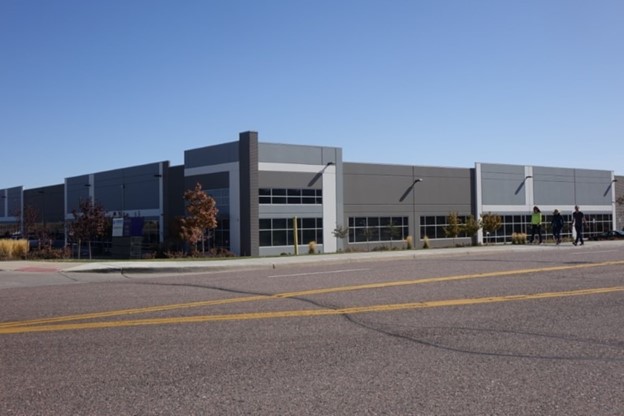
Plant Precast Concrete
Plant precast concrete panels are designed and detailed to fit together at the building site like a giant three-dimensional jigsaw puzzle or Erector set; however, they are precast and possibly pre-stressed in a manufacturing plant that is typically miles from the building site and then transported to the job site. In this case, the exposed surface may have an architectural finish and could look like wood, masonry, stone, or stucco.
Installation
The panels are placed on suitable footings consistent with the construction location. These footings are typically placed below frost level or on a frost-proof pad. The use of steel plates joins the two panels. These attachment points are bolted and welded. The same types of attachment is used when fastening panel to panel.
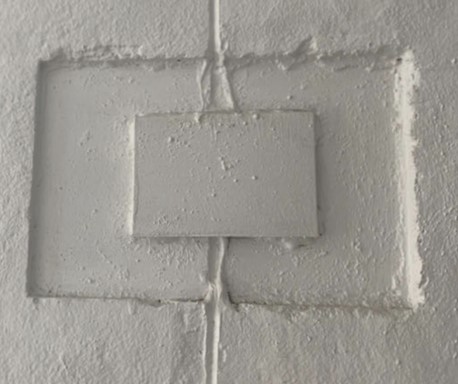
Advantages of concrete panels:
- insulation can be added to the interior of the panel;
- insulation can be added within the panel;
- concrete absorbs and stores heat;
- concrete is fire-resistant;
- it’s a quick method of construction;
- it’s durable; and
- it has predictable maintenance.
Maintenance and Failure
Within the concrete panels is reinforcement, such as steel wire mesh or reinforcement bar (rebar). Without this reinforcement, the concrete will be brittle, and the subsequent cracking will cause crumbling.
The steel wire mesh or rebar is set inside the panel during the forming process. It is designed to be in the body, and not close to the exterior. If the reinforcement floats or moves close to the surface, surface cracking and spalling will be visible, allowing for moisture intrusion. Additionally, the steel wire mesh or steel rebar will rust and expand. This manifests on the surface as rust holes or streaks. Such areas must be sealed to prevent moisture from harming the structural integrity of the slab.
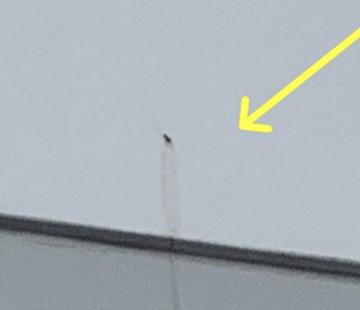
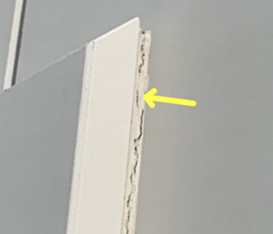
Cracked joints
These panels and buildings are sound in design but do not react well during tornado events. A domino effect may occur if one wall or panel fails, causing several other walls and panels to fall. This is not the case for construction using standard concrete block masonry walls.
Additionally, some walls may show failure at the joints between panels. Caulking seals these joints to prevent water entry and aid thermal mass. Without these joints, the walls can warp or crack. Building maintenance entails reapplying caulking, which typically lasts a minimum of ten years.
Commercial property inspectors should report on warping or cracking in the walls, and deteriorated caulking. Assessing cracks can be complicated and may require a specialist
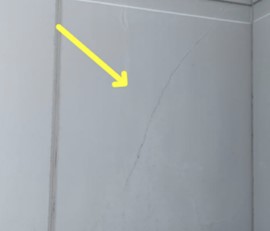
Cracking
to determine if it compromises the system. Some cracks do not affect a building’s structural integrity.
Another potential defect is a panel or a series of panels that exhibit signs of not being level. This may be from issues with the footing. Panels no longer straight or properly aligned may also have problems with their brackets and the attachment between the panels.
A building is designed with the four basic construction principles of plumb, level, square, and straight. Therefore, noting any variations to these principles will be crucial to a successful inspection of tilt-up concrete panels.
Takeaway for Commercial Property Inspectors
Concrete tilt-up panels are either site precast or plant precast, and are commonly installed as the exterior of warehouses, strip malls, and light industrial facilities. Some concrete tilt-up panels may exhibit an architectural finish.
Since tilt-up concrete panels serve as the structure for buildings, commercial property inspectors need to report on their condition during the walk-through survey. For example, improper installation or insufficient maintenance may be revealed by rust spots or streaks, warping, cracking, a lack of caulking in joints, or uneven panels. These signs will be easily visible at the exterior of the structure.
Article Written By: Rob Claus, CMI®
Additional Resources for Commercial Property Inspectors:


